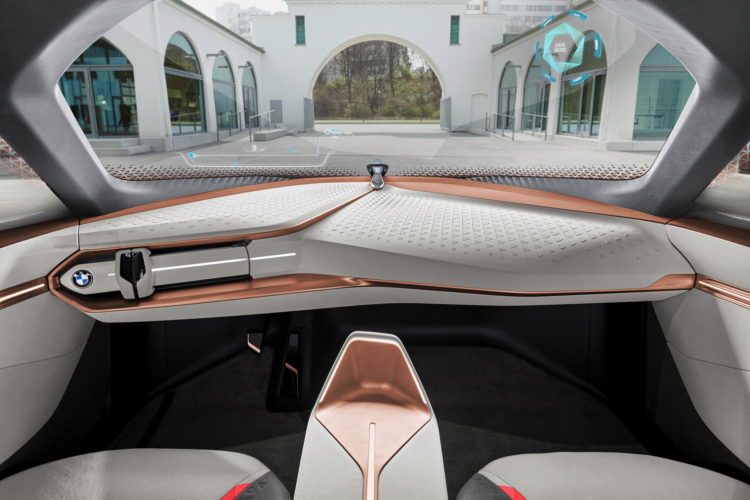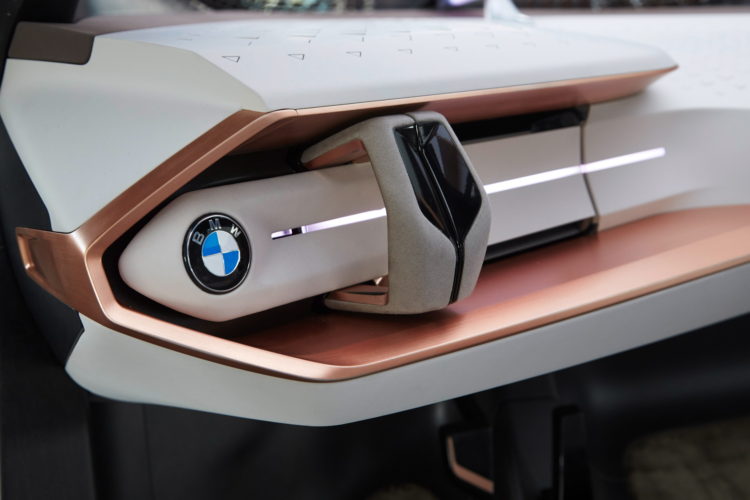Back in October, we attended the 100 Years celebration of BMW in Santa Monica where the main theme was the future of mobility. To learn more about the digital changes at BMW, we sat down with Holger Hampf, Head of Customer Experience Design, who talked to us about digital topics and user interface.
Firstly, it must be said that the auto industry is at a pivotal point in its history. Things are starting to really make the change from analog to digital. It used to be that cars were just mere transportation but now they’re connected to our entire lives, or at least becoming that way. “First of all, the transformation to a digital age is well on its way and I think, for a long time, it’s been said that the automotive industry has been behind the technology industry.” said Hampf. However, he feels the auto industry must advance even further. “I think we still have to go much bigger, in terms of how people interact with their car”.

One of the more interesting technologies BMW displayed was something the Bavarians call the “Companion”. This digital Companion is basically a virtual automotive butler. It’s basically Iron Man’s J.A.R.V.I.S. without the British accent or witty banter. “The intelligence in the car becomes more and more important to us, so it’s the fastest growing area for BMW”.
But don’t think you need to be Tony Stark to operate this, because BMW doesn’t want this technology to only be used by Millennials. “Well, first of all, I think this kind of trend was introduced by millennials but I also think that technology is, to some extent, also comfortably being used by younger and older people. So it’s not that the interaction is exclusive to a certain age group.” he said. “It’s about not complicating things and allowing technology to work in the background.”
And keeping that tech in the background, rather than right in the driver’s face, is important to BMW. “We try to keep information, and use the interface, to a minimum. In this case, it was for the purpose to not distract the driver.” said Hampf. “It was about putting the right information in the right place and the right time.” The car should be able to tell when certain information is needed by the driver and can display it accordingly, so as to not be distracting. It will be intelligent.

Prepare yourself for Skynet, as machines are learning. “Speech recognition, systems like Siri or Cortana, are only impossible because of A.I. and the intelligence that lives in the background. They’re learning systems.”
But what’s stopping BMW from taking something as intelligent as Siri or Cortana or even Amazon’s Alexa and putting it in a BMW? “Well, I think, first of all, driving a car or maneuvering a vehicle is still a special use case. We’ve talked about how driving a car is very different from using a cell phone. We already know that, today, many accidents are happening out there when people are focused on their cell phone. So we have to be very careful how we use these technologies and safety is the first thing we need to insure.”
“Yea, I think it is a challenge. And I think it’s a challenge to make decisions on what’s the right technologies to put in a car.” he said. According to Hampf, “We are only interested (as customers) in the top layer. Everything has to work underneath and without hassle.”

So, with all of this going on and all of this new tech arising, we ask how far we are away from just being able to bring our phones into the car and have the car know everything about us, through shared information. “I couldn’t put a year to that, but it’s fair to say we’re well on our way.” he said. “The phone, and the information on your phone, is very important for your driving experience in the car. It’s really more of a handshake, of technologies coming together.”





































































